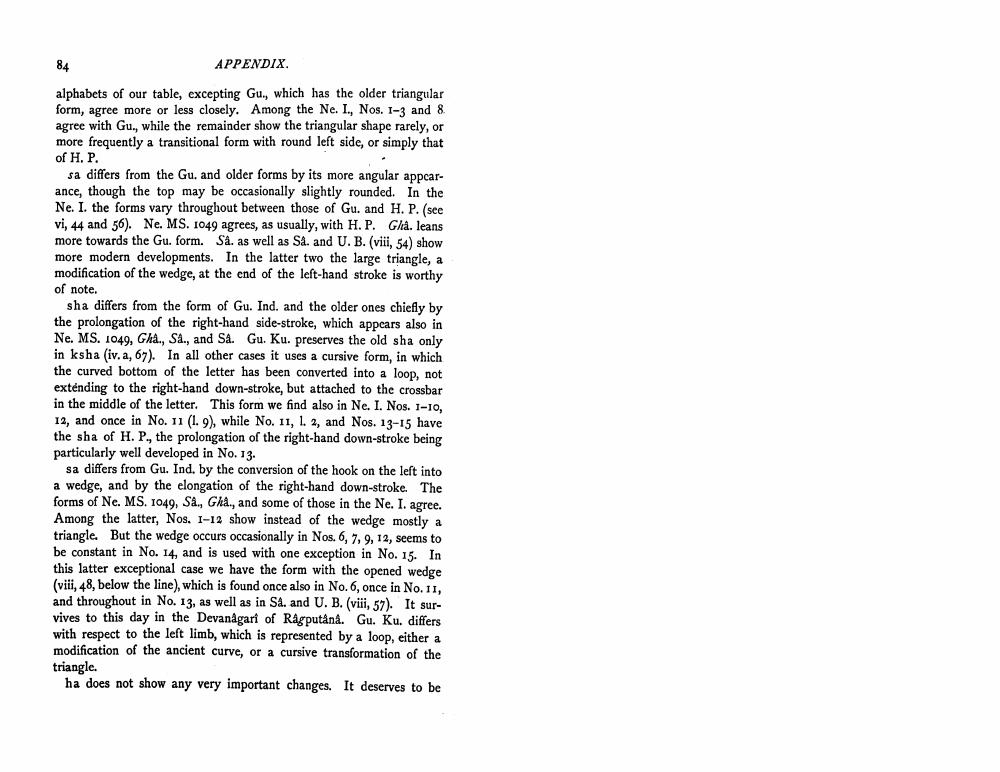________________
APPENDIX
alphabets of our table, excepting Gu., which has the older triangular form, agree more or less closely. Among the Ne. I., Nos. 1-3 and 8. agree with Gu., while the remainder show the triangular shape rarely, or more frequently a transitional form with round left side, or simply that of H. P.
sa differs from the Gu, and older forms by its more angular appcarance, though the top may be occasionally slightly rounded. In the Ne. I the forms vary throughout between those of Gu. and H. P. (see vi, 44 and 56). Ne. MS. 1049 agrees, as usually, with H.P. Gla. leans more towards the Gu. form. Så, as well as Sa. and U. B. (viii, 54) show more modern developments. In the latter two the large triangle, a modification of the wedge, at the end of the left-hand stroke is worthy of note.
sha differs from the form of Gu. Ind. and the older ones chiefly by the prolongation of the right-hand side-stroke, which appears also in Ne. MS. 1049, Gha., Sa., and Sa. Gu. Ku. preserves the old sha only in ksha (iv. a, 67). In all other cases it uses a cursive form, in which the curved bottom of the letter has been converted into a loop, not extending to the right-hand down-stroke, but attached to the crossbar in the middle of the letter. This form we find also in Ne. I. Nos. 1-10, 12, and once in No. 11 (1.9), while No. 11, 1.2, and Nos. 13-15 have the sha of H. P., the prolongation of the right-hand down-stroke being particularly well developed in No. 13.
sa differs from Gu. Ind. by the conversion of the hook on the left into a wedge, and by the elongation of the right-hand down-stroke. The forms of Ne. MS. 1049, Sa., Gha., and some of those in the Ne. I agree. Among the latter, Nos. 1-12 show instead of the wedge mostly a triangle. But the wedge occurs occasionally in Nos. 6, 7, 9, 12, seems to be constant in No. 14, and is used with one exception in No. 15. In this latter exceptional case we have the form with the opened wedge (viii, 48, below the line), which is found once also in No.6, once in No.11, and throughout in No. 13, as well as in SA. and U. B. (viii, 57). It survives to this day in the Devanagari of Ragputând. Gu. Ku. differs with respect to the left limb, which is represented by a loop, either a modification of the ancient curve, or a cursive transformation of the triangle
ha does not show any very important changes. It deserves to be




